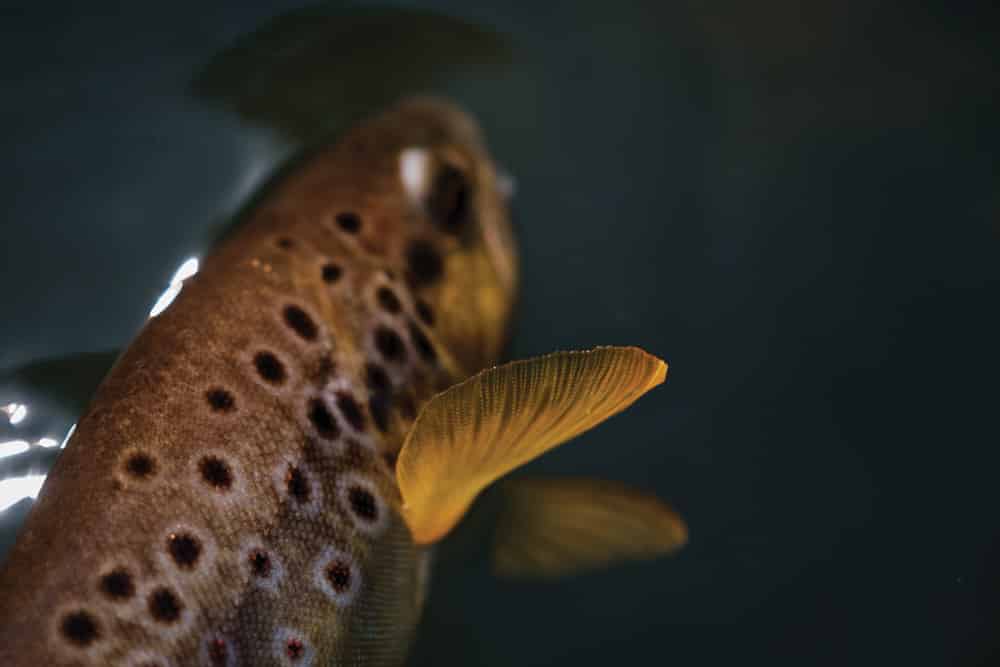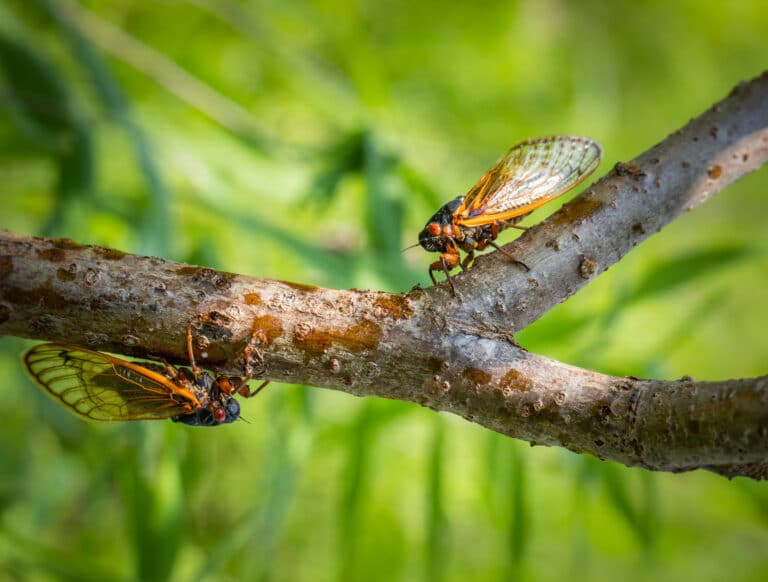Dams have become a necessary part of civilization as it exists today. With driving factors like flood control, navigation, hydroelectric power and drinking water, massive federal projects to tame the nation’s waterways became integral to the industrialization of our nation.
Dams are also an ecological nightmare. Except in pockets progress forgot, pretty much all the major waterways of the East are now strings of manmade reservoirs rather than free-flowing rivers. Native aquatic ecosystems are gone forever, along with the natural cycles of the flora and fauna they supported.
Despite being controversial, dams provide specific opportunities for anglers. By design, state and federal agencies set out to make lemonade out of the lemons that are permanently altered water conditions beneath dams. These stretches of river, known as tailwaters, are fed with cold water from reservoirs. In many cases, aeration systems are added to increase oxygen levels. Throw in some hatchery-raised fish, and you’re left with fisheries where trout have optimal conditions to thrive and grow. Naturally reproducing populations of trout have even established themselves in many tailwater rivers.
Tailwaters bear little resemblance to the pristine mountain streams many people equate with trout fishing. These are big rivers, with the water conditions and nutrient loads to support dense trout populations. But it’s not just about numbers. Good tailwaters also provide ample forage for fish to grow large quickly.
In some tailwaters, 20-inch trout are a regular occurrence, and on occasion some lucky angler lands a behemoth 30-incher that becomes legend. Tailwater brown trout dominate the state record lists, including three enormous fish caught from the fisheries detailed below.
Big rivers, however, come with a big warning. Tailwaters can be dangerous. They are characterized by huge fluctuations in flow, when water levels rise and fall rapidly depending on how much water is being released at the dam. Scheduled water releases are published online for most dams, but releases are also conducted without warning. Trips should be planned around scheduled releases, but anglers, especially wading anglers, must remain aware of conditions on the water. If you’re wading and the water level begins to rise, or if clear water becomes stained, it’s time to head to the bank.
For those ready to cast, here’s a look at four of the South’s best tailwater trout fisheries.
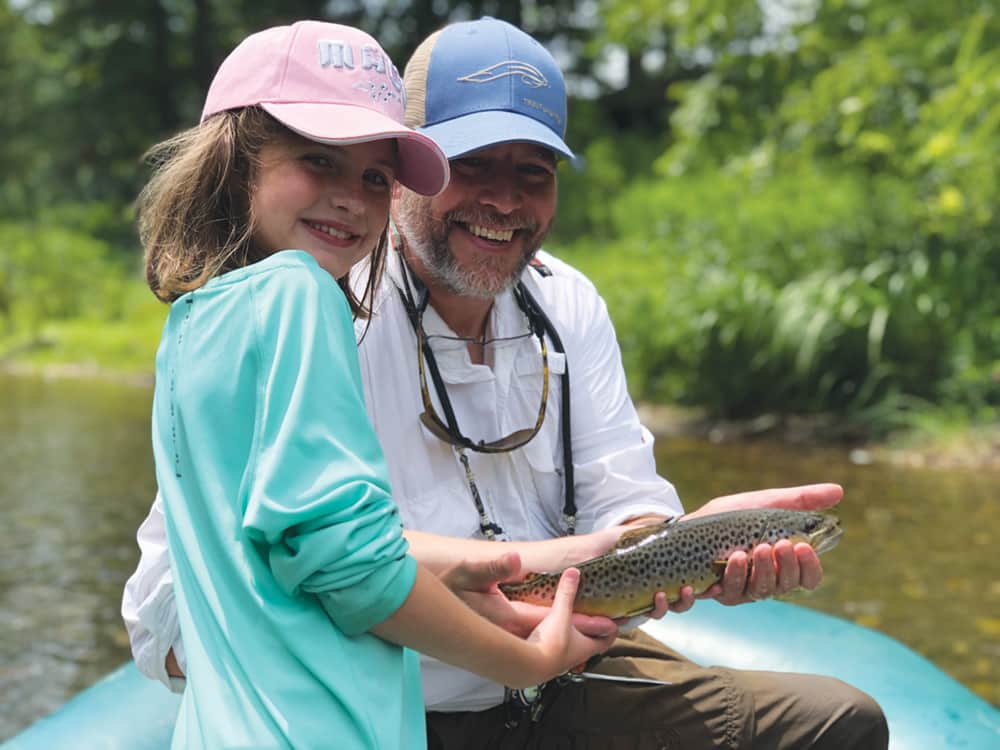
Jackson River, Virginia
Flowing through the rolling hills of Alleghany County, the Jackson River tailwater features some of the best wild trout water in Virginia. About 18 river miles between Lake Moomaw and Covington provide the water quality and habitat for trout to thrive and spawn.
A self-sustaining trout fishery was part of the original plan when Gathright Dam was built in the early 1980s, and the Virginia Department of Wildlife Resources followed through successfully. DWR hasn’t stocked the river since 1997, and today populations of brown and rainbow trout are strong and stable.
Six public-access points are sprinkled between private holdings along the river. There are accessible areas for wading anglers on low water, but with several float trip options, the river is best explored from a shallow-draft boat.
Doug Lane, founder of Angler’s Lane, an outfitter in Forest, Va., has guided on the Jackson tailwater longer than anyone. He said the river can be challenging, yet it also produces excellent days.
A recent DWR sampling showed good numbers of brown trout in the 16- to 18-inch range, as well as scads of rainbow trout longer than 12 inches. Most angling pressure on the river is from catch-and-release fly fishers, and special regulations are designed to produce trophy browns. Brown trout shorter than 20 inches must be released, and only one brown may be kept as part of a four-fish daily trout limit. Rainbows between 12 and 16 inches must be released
“If you know what you’re doing, there are some big fish to be caught,” said Lane. “There are fish in that river that are two feet long, but we consider an 18-incher a trophy. It’s best to go with low expectations and hope to be blessed with some good luck.”
Blue-winged olives are the most consistent year-round hatches. In mid to late April, the river experiences caddis blizzards, which Lane said can be difficult for dry fly purists who must compete with swarms of real bugs. Spring and summer also bring on spatterings of different mayflies. There’s a late summer hopper bite, and stoneflies are always a subsurface food source.
Lane said the most consistent year-round tactic is to fish smaller nymphs anchored by a size 8 to 10 stonefly. Small Baetis nymphs are usually a good choice and caddis nymphs, like the locally developed Green Monster, in sizes 12 or 14, can also be deadly.
Anglers should heed private property signage on the river. A 1996 lawsuit upheld the claim of certain property owners that an eighteenth century “Crown Grant” issued by King George II gave them legal authority to restrict fishing on roughly two miles of river downstream of the dam. Property owners have successfully sued trespassing anglers.
Go Guided:
Angler’s Lane, anglerslane.com
Release Schedule:
www.nao-wc.usace.army.mil/nao/projected_q.html
Clinch River, Tennessee
Tennessee is well known for tailwater trout fisheries. With renowned rivers like the Watauga, Clinch, South Holston, Holston, and Hiwassee, east Tennessee is a playground of fisheries that hold big, strong, and numerous trout. The Clinch River, northwest of Knoxville, is an excellent option for anglers who enjoy the challenge of large, sometimes very selective trout.
“It’s clichéd, but it’s true. They call it either the ‘Cinch’ or the ‘Grinch,’” said Bill Stranahan, a guide with Southeastern Anglers, out of Reliance, Tenn. “It can be tough, but on some days you go out there when everything is right and it can be epic.”
The Clinch is a large tributary of the Tennessee River that is fed by cold, oxygenated water through Norris Dam in Anderson County. With limited reproduction, trout populations are propped up with heavy stockings. Yet this is not a typical put-and-take fishery. Hatchery trout that make it through the initial angler onslaught at stocking points are greeted with great conditions for fast growth. TWRA sampling shows high densities of rainbow trout, 40 percent of which fall within an incredible 14- to 20-inch protected length limit.
Big fish on tiny flies and long thin leaders characterize the river’s reputation. The Clinch runs very clear on low water, and midges are the primary year-round food source. The fishing can get very technical. On the other hand, high water opens up opportunities for anglers to throw big articulated streamers in search of the Clinch’s true giants, brown trout approaching 30 inches. The Tennessee state record brown trout was caught from the Clinch. It weighed more than 28 pounds.
Stranahan said typical low-water fishing calls for 9- to 12-foot leaders, 6x tippets, and flies no larger than size 16 and all the way down to size 24. He suggested CDC midges or nymphing with small Zebra patterns and tiny pheasant tails. When conditions are right for throwing meat, he said sinking lines and streamers to mimic the river’s stocked fingerling rainbows are as good a choice as any to prospect for giants.
There are seven access points to the Clinch spread over about 13 miles of good trout water. Wading anglers prefer low flows, which bottom out around 200 cfs. If the dam is running its turbines, you’ll need a boat. There are numerous good options for float trips, and a shallow-draft jetboat will take you anywhere on the river you want to go.
Go Guided:
Southeastern Anglers, southeasternanglers.com
Release Schedule:
tva.com/environment/lake-levels/norris
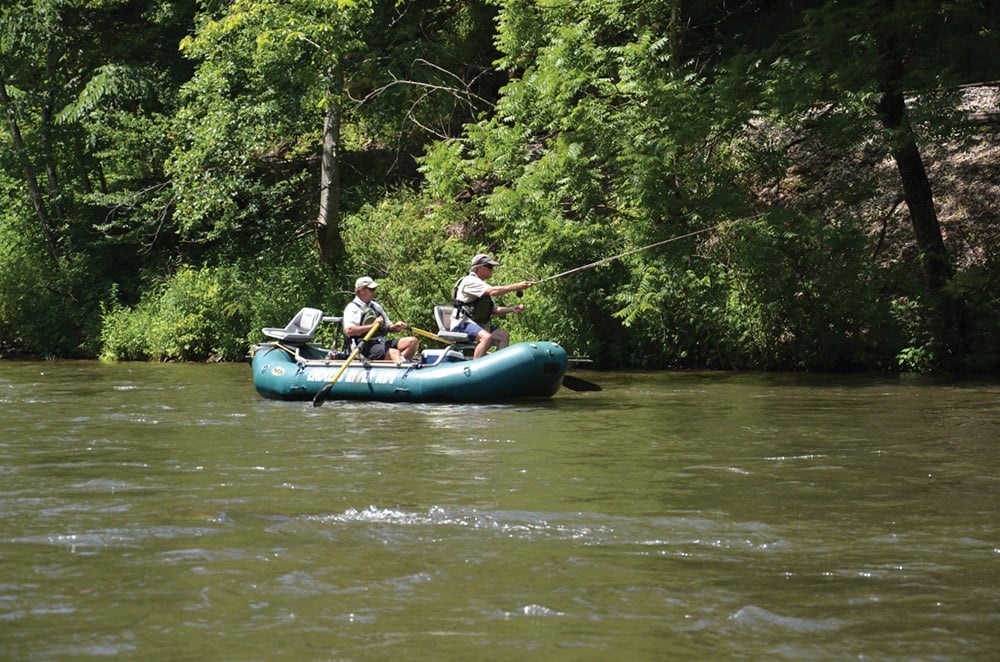
Nantahala River, North Carolina
The Nantahala River between Murphy and Bryson City is well known for a couple of things: a beautiful stretch of delayed harvest trout water upstream of Nantahala Gorge and whitewater rafting through the gorge. An aspect of the river that’s often overlooked is its excellent tailwater trout fishery.
Ken Kastorff, of Endless River Adventures, will tell you adventurous anglers can have their cake and eat it too. With a raft, it’s possible to fish while running the rapids downstream of the powerhouse. The ride is a thrill, and the fishing is fast-paced and underutilized.
Most of the Nantahala’s flow at the tailrace comes out of a pipe. It is drawn from Nantahala Lake and channeled for miles over the mountains to a powerhouse at the top of Nantahala Gorge. Water is released into the gorge at a steady 45 degrees, with high levels of oxygen perfect for trout. The tailwater trout fishery spans about eight miles of river running north toward Fontana Lake.
On low water, the tailwater resembles a gurgling mountain stream. During generation, the river is unleashed in a raging torrent. The tailrace is wadeable on low water, and this is when most anglers fish it. But it’s not necessarily the best time to catch fish. Low flows reveal wide, slick pools where trout by the dozens slurp bugs on the surface under clouds of midges or blue-winged olives. It takes delicate presentations and stealthy wading for a fish to even look at your tiny size 18 to 24 fly.
Kastorff prefers fishing among the whitewater paddlers during water releases, when heavy flows are constricted into a narrow gorge. The fishery is unique, and it’s highly recommended anglers go with a guide. The rapids are mild by whitewater standards, but they can be rough to flip a raft and make a yard sale of your gear. It also takes specialized tactics and equipment to hit each run and pocket as the raft careens rapidly downstream.
With a heavy tandem nymph rig or streamers slung on sinking lines, a pause of just a few seconds results in missed opportunities. Fish diligently, and the action can be outstanding.
The Nantahala tailwater is densely populated with a good mix of wild and stocked rainbows and browns, as well as a spattering of brook trout. Typical fish measure from 9 to 15 inches, but the river is known for producing giant 30-plus-inch browns on occasion. The North Carolina state record came from a pool just beneath the powerhouse. It weighed 24 pounds, 10 ounces.
The only drawback to this fishery is all the paddlers. You’ll have to watch your backcast, because every few minutes a flotilla of rafts bearing helmeted tourists or a pack of nose-plugged kayakers rolls through. They’ll inevitably ask, “How’s the fishing?” So be ready with an answer, and know that the boat traffic doesn’t affect the fishing at all.
As Kastorff put it, “It’s a good thing boats don’t spook these fish, or they’d starve.”
Go Guided:
Endless River Adventures, endlessriveradventures.com
Release Schedule:
lakes.duke-energy.com/index.html#/flow
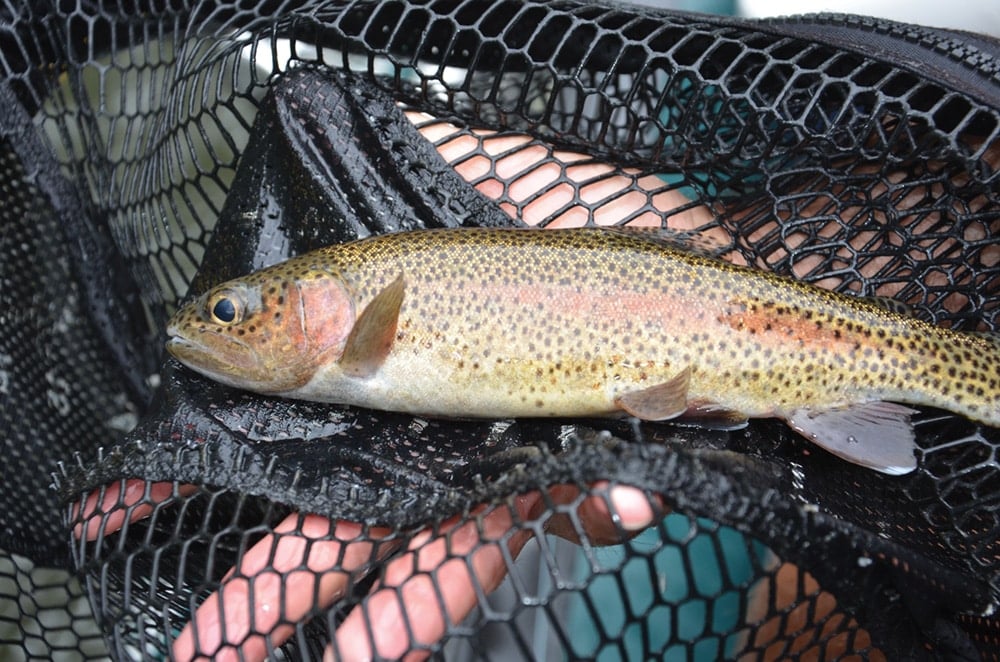
Chattahoochee River, Georgia
Tucked away from sight in the northern suburbs of Atlanta, the Chattahoochee River tailrace below Lake Lanier is one of the best “urban” trout fisheries in the country. Below Buford Dam, there are about 30 miles of big river with excellent trout habitat and forage. “The Hooch” is fed year-round with 40- and 50-degree water from the bottom of Lake Lanier and provides excellent spawning and growth conditions for the river’s population of wild brown trout.
Georgia also stocks rainbow trout in this stretch of river, but the naturally reproducing browns are the highlight of the fishery. They are prolific, making up about 75 percent of the total trout population in some samplings, and they grow quickly in the river’s fertile middle and lower stretches.
Chris Scalley, of River Through Atlanta Guide Service, is a local who has probably logged more hours on the river than anyone. He’s a champion of the river, who has watched and helped its evolution from a put-and-take fishery into the angling destination it has become.
“We’ve caught wild browns from Buford Dam to Roswell Shoals at Island Ford since I was a kid in the 1980s,” Scalley said. “We knew these beautiful creatures were not escapees from the Buford hatchery, as some thought at the time. All those gravel bars spread throughout the river are spawning habitat.”
Brown trout stockings ceased in 2005 to test the long-term viability of the wild trout population, and they haven’t had to stock a brownie since. Scalley said a decent day with competent anglers might consist of good numbers, and a mix of 8- to 12-inch rainbows and browns as well as a brown trout or two in the 14- to 16-inch range.
There’s also the potential for larger fish…much larger fish. Browns longer than 20 inches are not too uncommon, and the river has also given up a string of monster state-record brown trout. The most recent, caught in 2014, weighed 20 pounds, 14 ounces.
Giant fish approaching 30-inches are not a regular occurrence, though. Scalley said they are caught by anglers willing to spend many fishless trips slinging large articulated streamers on sinking lines. For more consistent action, he likes to rig up three-nymph indicator rigs anchored by a big black stonefly nymph. He’ll throw in a San Juan Worm to lure in those hatchery rainbows, and a small Baetis nymph sometimes gets the attention of larger browns if the stonefly doesn’t.
“When I started my guide service in 1994, people thought we were crazy,” Scalley said. “Guess they hadn’t seen enough of the river to realize how beautiful it is, or to see its potential as a fishery.”
Scalley speaks the truth. The U.S. Forest Service manages a string of recreation areas along the tailwater where boaters can set up floats. Several of them also offer wading anglers access to good shoals. Between those access points, there’s limited riverside development, and forested banks and bedrock shoals make it easy to forget you’re floating through a major metropolitan area.
Go Guided:
River Through Atlanta, riverthroughatlanta.com
Release Schedule:
nps.gov/places/buford-dam-place.htm
Nick Carter is author of “Flyfisher’s Guide to North Carolina & Georgia.” It is available on Amazon or by contacting the author at [email protected].
Cover photo: State-record brown trout have been caught in the Chattahoochee River. Photo by Sammy Chang
